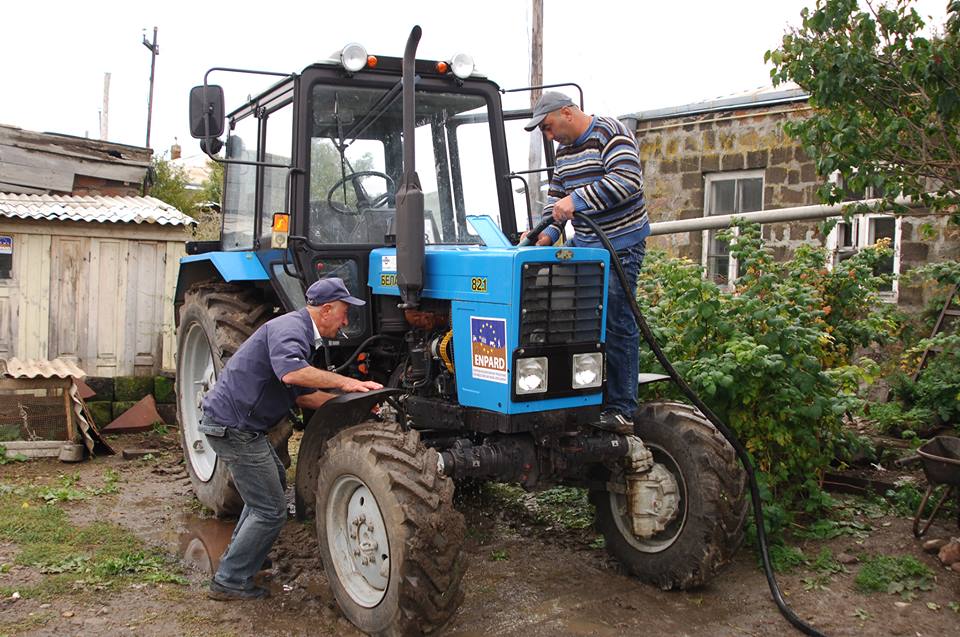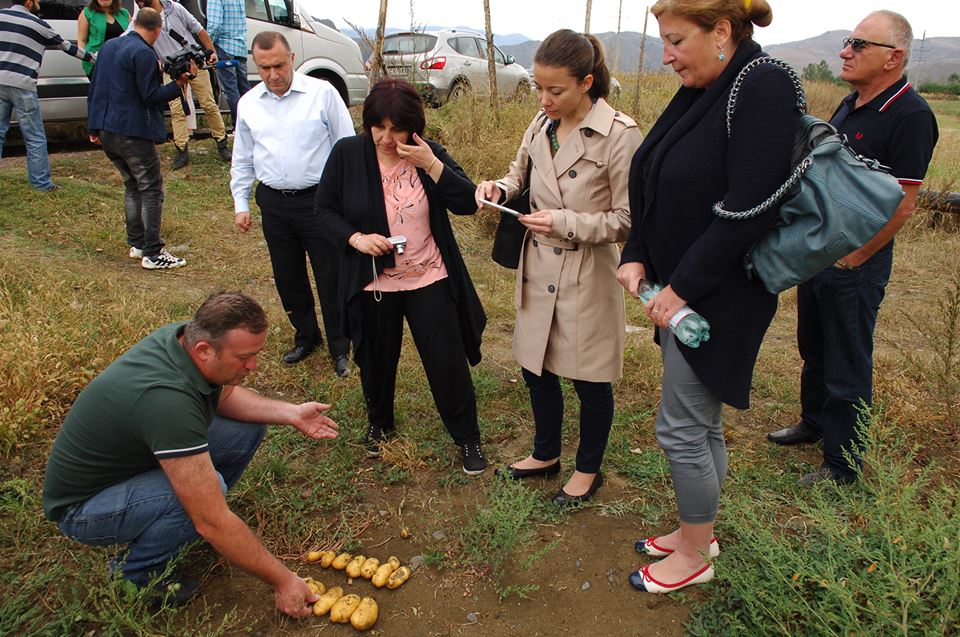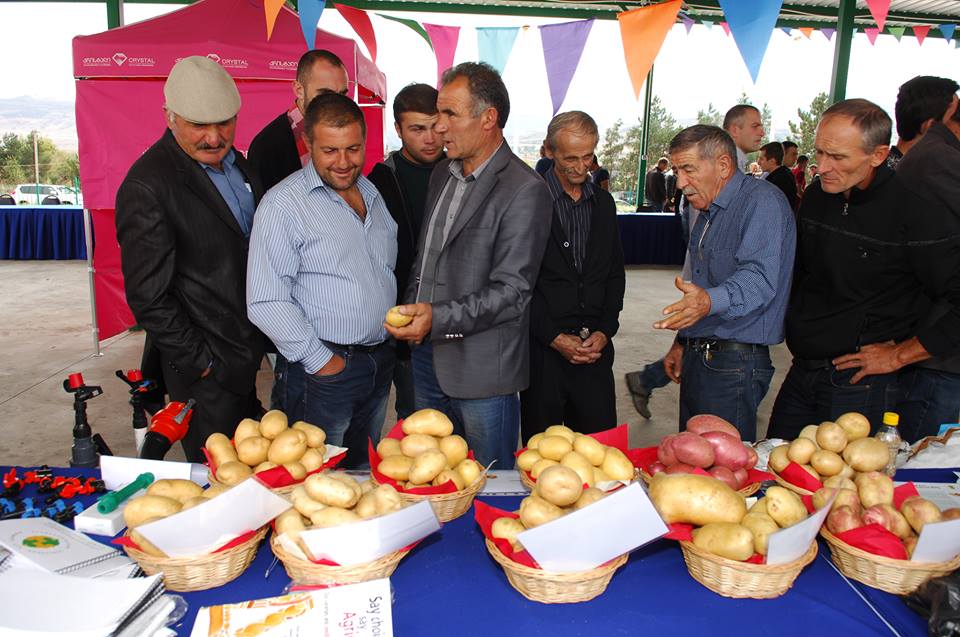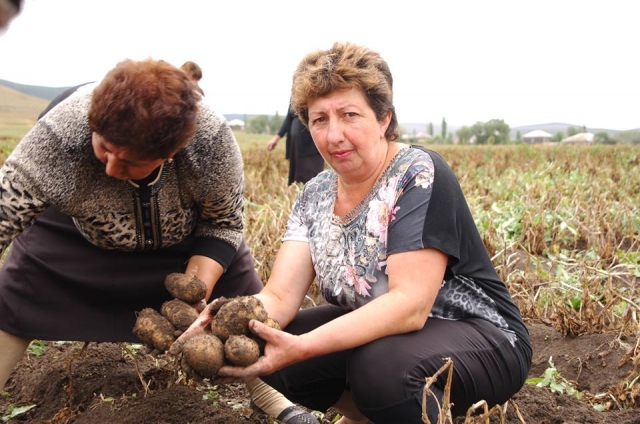In the Land of Samtskhe-Javakheti, Where the Potatoes Grow
From my experience, media tours usually tend to turn out as either dreadfully boring or very fun, in both cases missing the main point of the undertaking – providing media people with some hands-on knowledge on the matter they’ll be producing stories about. Make it too boring and facts & stats heavy and you get equally dull material, go all in into the fun part and well, as the popular meme goes, ain’t nobody got time for stories and that.
Thankfully, the media tour organized by ENPARD (European Neighborhood Program for Agriculture and Rural Development (my head aches every time I have to spell it out like this) in Georgia hit the solid, if somewhat unspectacular golden middle – being informative without being dull on a subject that could really use some serious media boost: agrotourism, cooperatives and all the European know-how we’ll have to learn and adopt to access the European market and make our agriculture at least somewhat sustainable. More on that later.

But first, on the destination. Samtskhe-Javakheti is a rocky and hilly land, and while the stark beauty of its landscapes is breathtaking, there are very few cultivable fields. That is especially true for places like Tsalka and the towns of Akhaltsikhe and Akhalkalaki. This limitation has prompted the local farmers and entrepreneurs to narrow down the list of possibilities and specialize, resulting in potato coming up highest in the production chain, becoming somewhat synonymous with the region as a whole. And indeed, it would be fair to say that our media tour had its fair share of sightseeing focused exactly on this particular vegetable.
Our first stop was at ‘Khulgumo,’ a cooperative specializing in potato cultivation. The cooperative consists of 20 people (16 women, talk about gender equality!), which stands as a higher than usual number of workforce as far as these newly hatched cooperative enterprises go, we were told. Unlike in Soviet times, when the “cooperative” approach was forcefully imposed upon people, in modern Georgia, incentives for creating a cooperative (or enrolling into one) are somewhat murky and less than sustainable, so most of these cooperatives are boosted by external funds from donors and government.

The folks at Khulgumo jointly work on some 30 hectares of land and to help them in this undertaking, Mercy Corps, one of ENPARD’s implementing partners, has supplied them with a tractor and trailer, together with necessary machinery, all of which they proudly presented to us.
The bolstered cooperative, we were told, registered a significant increase in production output, with an 8-10 ton margin of annual per hectare production skyrocketing to 30 to 45 tons. Potatoland, ahoy!

Our next stop was at ‘Five Stars 2010’ cooperative, which specializes in… potato cultivation. Well, I warned you. But jokes aside, this was a neat place and the welfare of more than 20 families depend on how well the cooperative is doing, so my best wishes to them. Five Stars was also not without problems: shortage of high-quality seeds and fertilizers meant they were scoring not so high on production charts. The arrival of ENPARD and Mercy Corps changed that, with the farmers getting their hands on E-class potato seeds and fertilizers, which in turn enabled them to considerably increase the level and quality of their production.
Cooperative ‘Moskhi,’ next in line and first of its name, was established through the combined efforts of four people living in the village of Tsnisi. The cooperative is engaged in the production of [dramatic music, drums]: potato! But not only that- it also produces onion, carrot and beetroot. This was a cooperative that hadn’t yet received assistance from the ENPARD & Mercy Corps duo, though the blessing spell has already been cast: The cooperative stands to receive an assortment of agricultural aggregates – sowing combiner, base creator, spray equipment and onion harvester. The amount of the grant is just short of USD 15,000.
Farmer’s service center ‘Serioja Ezoyan’ proved to be the most interesting of stops for me, and that’s not just because of fairly hilarious name that it shares with its owner (Ezoyan means the owner of a yard in Georgian, so the cooperative’s name stands as Serioja, the owner of yard. Ha ha. Well, it seemed pretty funny at the time). After visiting the first three cooperatives, I really wanted to see a place that would serve as sort of logistics hub for farmers. Well, the entrepreneur here owns its office, retail and storage facilities and provides pretty much all necessary assistance to the farmers- starting with seeds and medical supplies ending with plant protection products and fertilizers. So, a place of strategic importance both for farmers and their buyers. If I could offer my five cents, I’d say in the longer run that Akhalkalaki would benefit from two of those to increase the competitive aspect of the process. ENPARD and Mercy Corps supplied Mr. Ezoyan and co. with a vehicle to transport their goods, making their products accessible to about 4,000 farmers. Another good deliverable is that the center also offers information and consultation, as well as trainings in different fields. One could argue that the government should be doing that, which they do, but a helping hand from a private entrepreneur is not to be shunned.
That wraps up my account of day one, with day two consisting of a somewhat mundane presentation of what ENPARD and the government do in the region of Samtskhe-Javakheti. The speaker, Mr. Misheladze, was from the government sector and I had the feeling that his presentation was designed with donors and stakeholders in mind rather than journalists. Well, it’s the government, what can you do? At least they try to do good things instead of bickering with opponents on TV...
The saga ends with us visiting an agriculture exhibition presented by Mercy Corps, who rightfully deserve all the credit they are getting for implementing the ENPARD project. The scope of work they carried out is visible even to an untrained eye, and the fervor and enthusiasm they spoke with is certainly a thing of luxury these days. The exhibition was interesting, with, as we were told, more than 200 cooperatives presenting their trade (mostly potatoes, sorry!), and tens of service-providing companies offering their skills and competences to farmers and other actors involved.
In the end, this was genuinely one of the most productive media tours I’ve been on and I’ve seen my fair share of those. Not boring, not fun, but productive.
By Inga Mumladze











